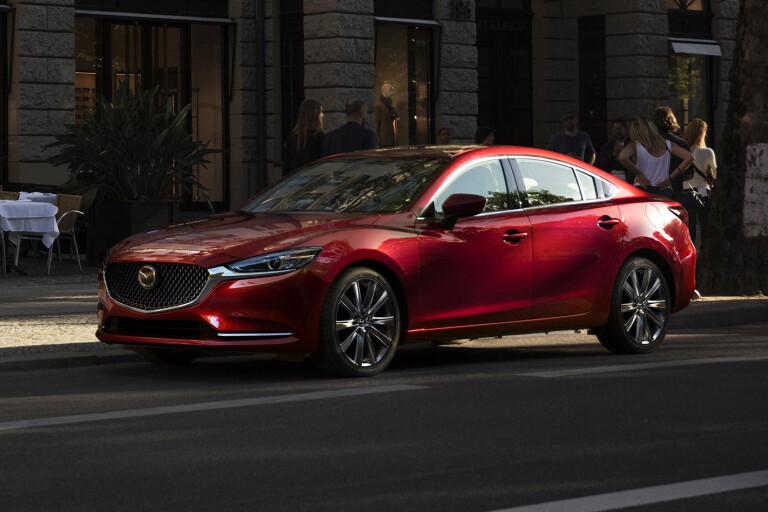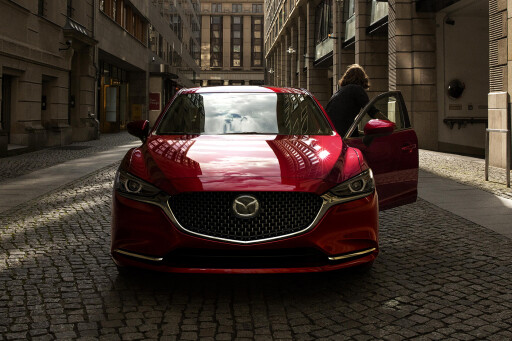
HERE’S a simple fact known throughout the publishing business: there’s only so much you can learn from a press release.
We recently delivered details on the revised Mazda 6 based purely on information provided by the company; now we’ve had a chance to see the car in the metal, sit in it and talk to key design and engineering personnel, it’s become clear: this is much more than a light refresh.
Yes, of course there are the usual exterior changes: lights, fascias at each end, new boot lid, new wheel designs.

But it’s the addition of the 2.5-litre turbo engine from the Mazda CX-9, likely to be constrained to GT and Atenza model grades, that’s the crucial powertrain change. It’s recognition that plenty of buyers want more power and torque than offered by the atmo 2.5, which will continue to sell alongside in the entry and mid-grade Mazda 6 models.
The turbo engine features what Mazda terms Dynamic Pressure Turbo to build boost nearly instantaneously by using a small inlet port to force air into the turbocharger. A secondary valve opens at higher revs for increased airflow and maximum power. A pulse-scavenging 4-3-1 manifold reduces exhaust back-pressure and contributes to efficiency.

The atmo four, meanwhile, does not carry over unchanged. It benefits from cylinder deactivation, shutting down two cylinders on a light cruising throttle. A centrifugal pendulum has been added to the torque converter of the six-speed automatic as a measure to counterbalance the vibration that might otherwise be felt when running on two cylinders. The engineers claim the result is an imperceptible switchover between two- and four-cylinder modes.
The additional grunt of the 2.5 turbo stands to transform the driving characteristics of the updated 6, but buyers should also expect a noticeable gain in cabin quietness and ride comfort.
The former should come from the upgrades to the construction of the floorpan section, and extra sound deadening that has been applied. According to Jacob Brown, product communications manager for Mazda North America, “The Skyactiv philosophy has been all about reducing weight, but we acknowledge that to move the 6 to the next level and compete in the more premium space, we need to improve the NVH, even if that does add a little more weight.”

Exactly how much the company is not saying for now, but the changes look promising. Additional body reinforcements have been applied, thicker sheet metal is used for the rear wheel-wells, reinforced chassis bracing has been added, and thicker suspension trailing link mounts should all help the NVH cause.
According to Brown, the program of improving stiffness has allowed chassis engineers to retune the suspension settings for improved ride comfort, with claims that there has been no loss of handling precision. In fact, engineers insist the revised 6 handles better, thanks to revision of roll centres and a rigid-mounting of the steering rack to the chassis, to offer more direct steering response.
It’s the all-new interior that stands to have the likes of Lexus, Infiniti and Genesis feeling nervous. Virtually nothing from the outgoing car is carried over inside. The dash, instruments, console, door trims and seats are all changed, and the overwhelming impression from sitting in the car is that this is a quietly stylish cabin crafted from quality materials.

Nappa leather features for the seats, which are now available with heating and ventilation, while a micro-suede is used sparingly for the lower section of the dash and parts of the doortrims. Traditional Japanese Sen wood accents are used with restraint, but contribute to a crafted, upmarket feel.
We’ll know how all this translates to an on-road experience when we hopefully drive the 6 around Q2, while Australian sales are expected to begin sometime in Q3.

COMMENTS